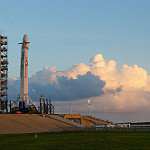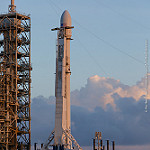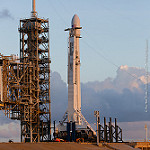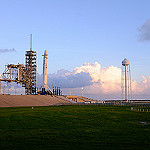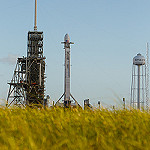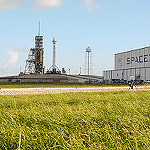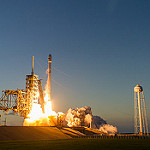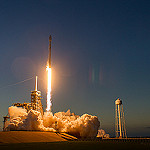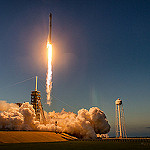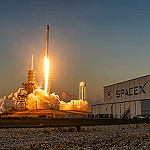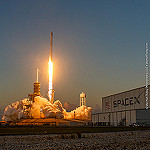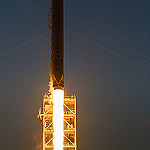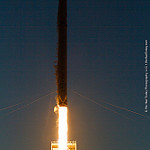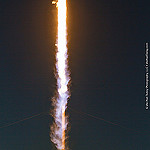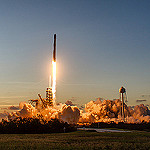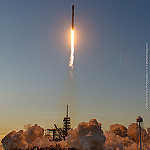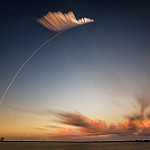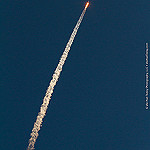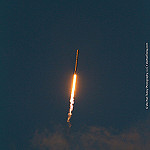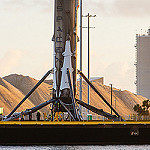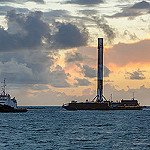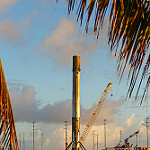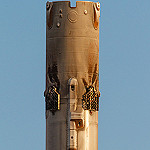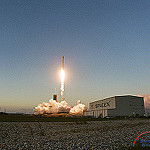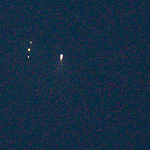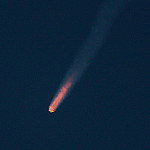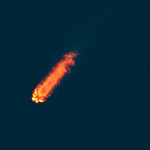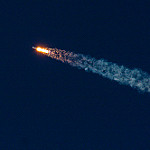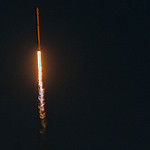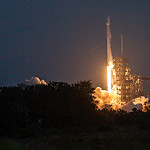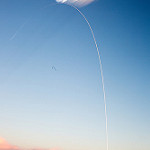SpaceX delivers SES-11, lands third flight-proven Falcon 9
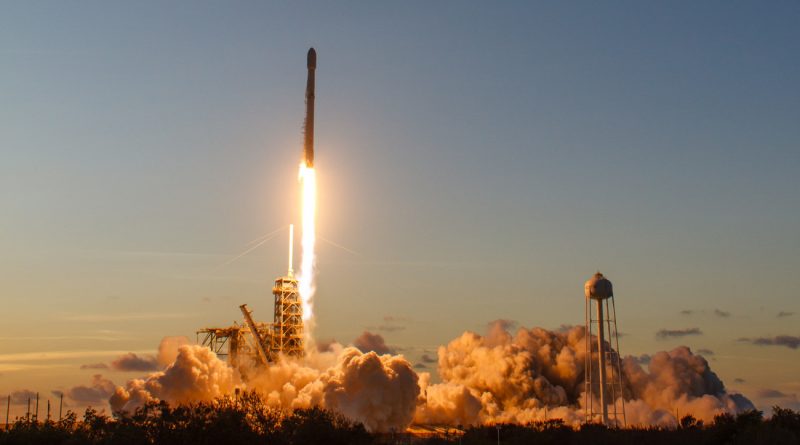
Backdropped against a blue sky tinged orange by the setting sun, SpaceX's third flight-proven Falcon 9 rocket launched the EchoStar 105 / SES-11 satellite from Kennedy Space Center's Launch Complex 39A on October 11, 2017.
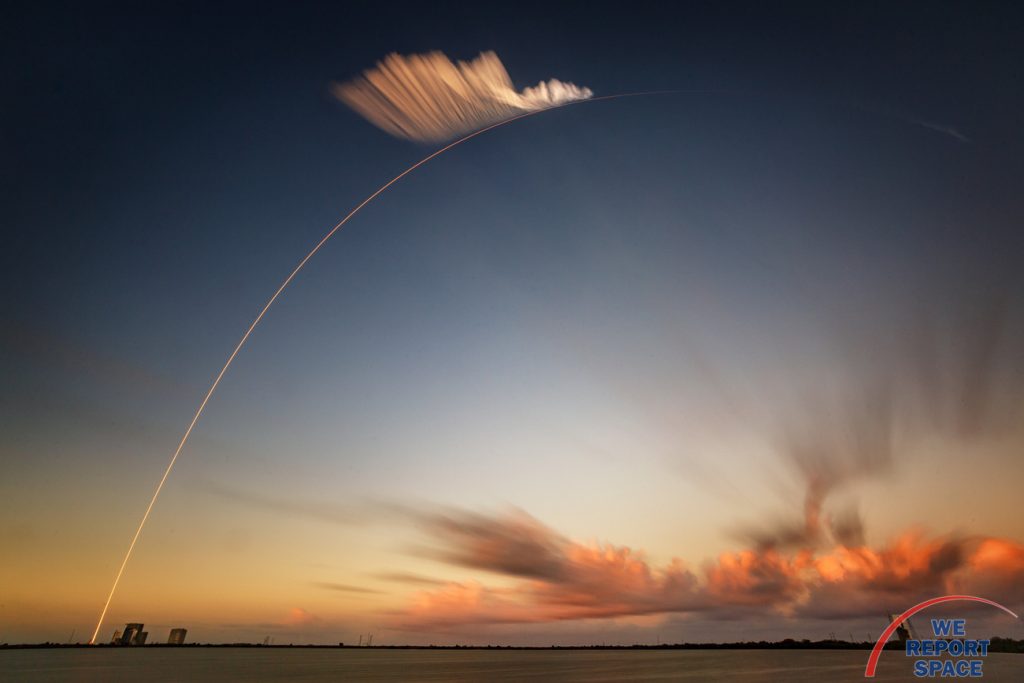
Company Milestones
The Falcon 9 first stage used in this mission is the first to have flown exclusively from LC-39A, having previously launched the CRS-10 mission for NASA in February 2017. It is also the first booster core to have made a daylight touchdown at Cape Canaveral Air Force Station's Landing Zone 1, the previous LZ-1 landings having been made at night.
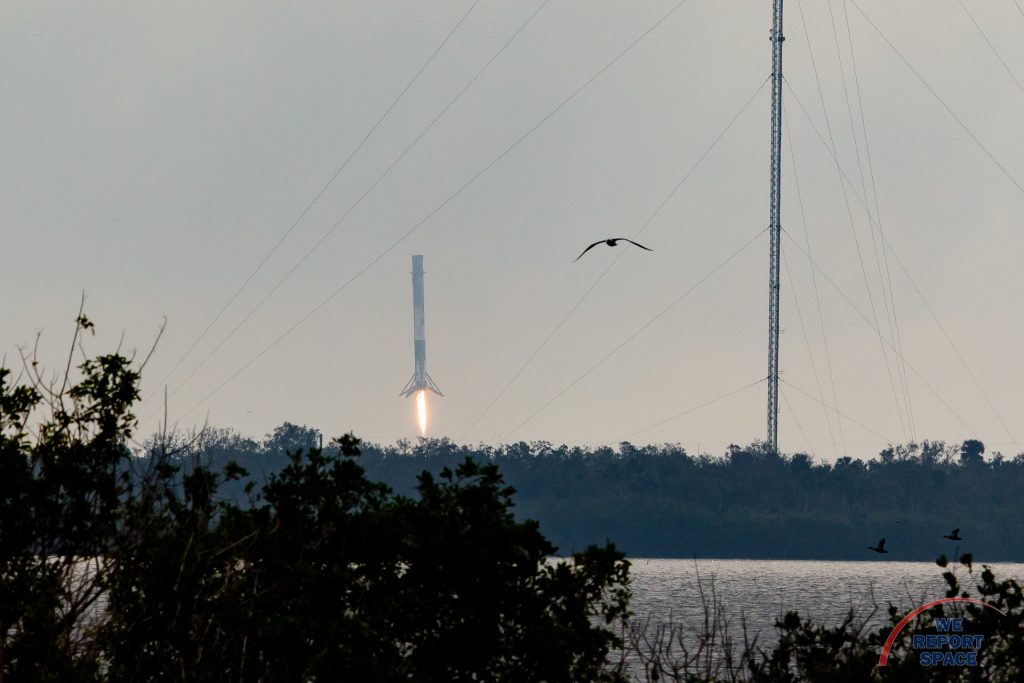
Following the successful landing in February, the core was put through SpaceX's processing flow and certified for use on SES-11, the second time Luxembourg-based SES has chosen to use a previously flown first stage.
Mission Shuffle / Sunset Spectacle
SpaceX and United Launch Alliance engaged in a delicate ballet of launch scheduling last week, with Atlas V originally scheduled to launch NROL-52 a few days ahead of SpaceX's SES-11 liftoff. However, weather & equipment issues plagued Atlas's launch, pushing the T-0 from early Thursday to early Friday, then early Saturday before ultimately standing down to replace a questionable telemetry transmitter on the Centaur second stage. SpaceX's original launch slot of Saturday evening, October 11, was yielded up with SpaceX making the following statement: "The shift gives us extra time to complete final launch preps with the bonus of bypassing some bad weather headed for the Cape this weekend."
In the interim, SpaceX successfully launched the Iridium NEXT III payload from its West Coast launch facility, Vandenberg Air Force Base SLC-4E and captured the first stage booster aboard "Just Read the Instructions," the Los Angeles-based drone ship on Monday, October 9, 2017.
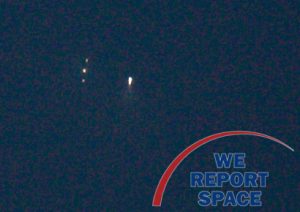
SpaceX's Wednesday launch from Kennedy Space Center proceeded without any hiccups in the countdown, lifting off at 6:53pm EDT, right at the opening of a two-hour launch window. The inclement weather that had plagued the Space Coast cleared to provide a beautiful sunset-lit spectacle for this mission, with clear skies at the higher altitudes providing an unobstructed view (for those with long enough lenses or sharp enough eyesight) of the second stage separation and payload fairing jettison.
As the first stage continued downrange, it crossed the boundary from day to night, touching down in the dark on the Port Canaveral-based drone ship "Of Course I Still Love You."
About EchoStar 105 / SES-11
The payload for Wednesday launch was a single satellite bearing two names: US-based EchoStar is selling capacity on the Ku band under the name EchoStar 105, while Luxembourg-based SES is offering capacity for the C band, under the name SES-11. The '105' portion of the EchoStar name references the satellite's orbital slot, at 105 degrees West, covering the 50 United States, as well as the Gulf of Mexico and Caribbean.
Photos of this launch may be purchased from WeHadToday.com.
Photos
Falcon 9 / SES-11 (Bill and Mary Ellen Jelen)

Stunning, full color photo book covering every east coast launch spanning 2014-2015, including the first-ever powered landing of a SpaceX Falcon 9 rocket.
More Info